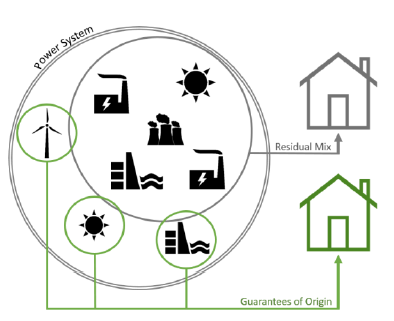MB Emissions - FAQ
FAQ
A good resource relating to market-based emissions reporting can be found on the GHG Protocol page. This FAQ should answer most technical questions.
No, at least not using the Market-based emissions report. Carbon offsets are measured in tCO2e and they exist outside of the Scope 1, 2 and 3 categories. In fact they are in a category of their own for reporting purposes in Envizi are not netted with the three GHG scopes. Carbon offsets cannot be linked directly to an organization's GHG emissions but instead need to exist outside of their GHG inventory. This is a requirement of the GHG protocol, and emissions reductions are only visible when summarising offsets with scope 1, 2 and 3 totals. Envizi provides a view on this in our Emissions Performance dashboard.
An important distinction between offsets and RECs are that offsets represent direct carbon reduction, which is why they’re measured in CO2e. Certificates, on the other hand, represent 1 MWh of renewable energy generation and only translate to emission reductions when allocated against electricity consumption (and is not only dependent on where the REC was generated).
For example, a REC generated in a windfarm in Quebec, Canada where the grid emission factor is 1.2 gCO2e/kWh can be applied to a building in Ontario, where the grid emission factor is 0.04 kgCO2e/kWh. Using the ‘market-based’ approach a company can justifiably claim to have avoided emissions calculated at the Ontario rate because Quebec and Ontario are in the same “market”, in this case the NERC region of NPCC. The common mistake is to calculate emissions savings from a REC using the factor of the region where the REC was generated and then treating the REC like an offset. This is only acceptable if the REC is generated and consumption occurs in the same region as the emission factor.
This is the main reason behind the need for the market-based emissions method. Location based emissions require emissions from electricity to be reported based on where the electrons were generated and consumed and the method of generation is not considered. Loosely speaking, emission factors applied in location-based emissions reporting are based on total emissions within a region divided by the total kWh generation over a time period. The environmental aspect of green energy (which is just another way of saying the certificates relating to carbon-neutral power generated) must be accounted for outside of Scope 2.
The market-based emissions method allows organizations to include certificates as part of their ‘market-based emissions’ Scope 2 total by apportioning certificates against consumption in-line with the Scope 2 quality criteria, and then applying a hierarchy of factors against the remaining electricity consumption that is not covered by certificates.
So to simplify this answer - green electricity is NOT part of Scope 2 location based emissions reporting, but it IS part of Scope 2 market-based emissions reporting.
Yes. If your organization operates in a region where the government mandates a certain amount of renewable power will be available on the grid then please get in touch with our help desk and Envizi will help you with this configuration requirement.
Unfortunately not. This would alter the allocation of your voluntary certificates for your reporting and would not stand up to an auditors scrutiny if certificate allocation changed during a reporting period. The same principle applies to reporting period and it’s not recommended to switch your 12-month reporting time frame.
By default the classification group structure is used to allocate voluntary certificates. If your organization has configured an alternate portfolio grouping structure for the purpose of market-based reporting, your organization is welcome to use that instead. A combination of 2 grouping structures cannot be used.
Get in touch with Envizi to make the switch to an alternate portfolio group structure, however be aware that any locations that are not included in the portfolio grouping structure will not be included in the Market-based Emissions report.
AA residual mix emission factor represents the emissions and generation that remain after certificates, contracts, and supplier-specific factors have been claimed and removed from the calculation. A residual mix emission factor can be a regional or national factor.
This diagram should help illustrate ('Guarantees of Origin' refer to ‘Certificates’):

The certificate allocation methodology used in the Market-based Emissions PowerReport is a fundamental principle of how the MB emissions report works. We use this methodology so that organizations don’t need to exactly match certificate quantities to monthly electricity consumption amounts.
Without this allocation methodology, each monthly certificate quantity would need to exactly match the electricity consumption for the location, state, country or group (which can include hundreds or thousands of electricity accounts) - and that task would be almost impossible since consumption values change daily as Envizi receives continuous automated data feeds of electricity consumption.
